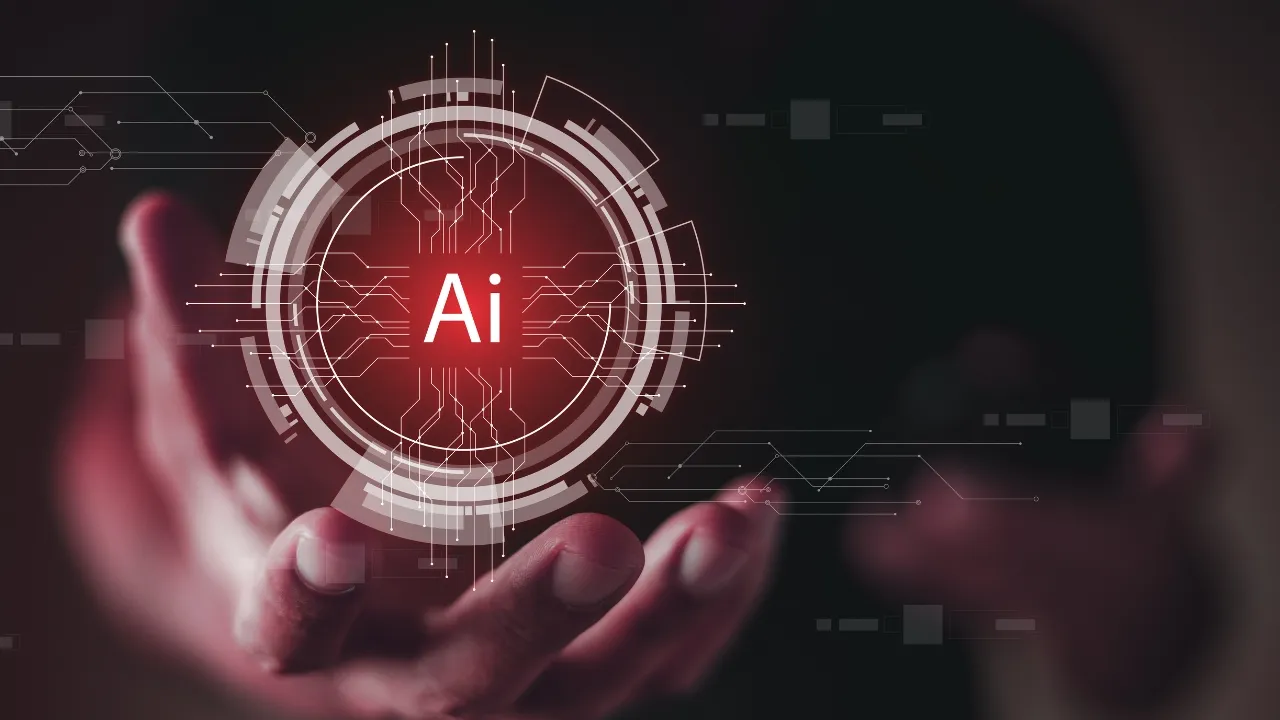
Have you ever wondered how Artificial Intelligence (AI) became such a pivotal part of modern life? AI has become integral to our everyday lives since its humble beginnings in science fiction.
This article will take you on a journey through the fascinating history of AI - from its birth to the present day and even explore future predictions. Ready for an adventure into the world of intelligent machines? Let's go!
Key Takeaways
-
Artificial Intelligence (AI) technology allows computers or machines to mimic human intelligence.
-
The AI research community began in the 1950s and has rapidly evolved since then, with breakthroughs and setbacks along the way.
-
The 1980s marked a period of significant growth for AI, driven by the emergence of expert systems.
-
From 1987 to 1993, there was a decline in interest and funding for AI research during the "AI Winter."
-
AI experienced a revival and expansion from 1993 to 2011, leading to its widespread implementation across various industries.
-
Image and language recognition technologies played a crucial role in the advancement of AI during this time period.
-
Since 2012, AI has rapidly developed and significantly impacted various fields.
-
The future of AI holds endless possibilities, including advancements in machine learning and ethical considerations.
Understanding Artificial Intelligence
Artificial Intelligence, commonly known as AI, is a technology that lets computers or machines mimic human intelligence. It’s all about creating computer systems capable of learning, making decisions, processing information, and understanding natural language–just like humans do.
Alan Turing was the pioneer who suggested using these intelligent machines for problem-solving and decision-making.
Incorporating elements from various fields such as computer science, mathematics, and neuroscience, AI has become central to modern life. At its core is machine learning–an application that allows computers to learn without being explicitly programmed.
In many forms, including robotics and speech recognition software, AI showcases how machines can emulate human brain structure and intellect.
AI research started gaining momentum in the early 1950s but remained within university labs due to the high costs associated with computing. The Dartmouth Summer Research Project on Artificial Intelligence (DSRPAI) held in 1956 marked a significant milestone in AI history by kickstarting computer science discussions on potential prospects and impacts.
From then on, an era began where artificial intelligence evolved dynamically; faster computers became more accessible, while algorithmic improvements facilitated better machine-learning techniques, underscoring rapid advancements until 1974.
Early forms of AI, such as ELIZA, demonstrated linguistic interpretation capabilities, whereas General Problem Solver presented potential solutions for efficiently tackling problems – offering a glimpse into how deeply entwined our future would be with artificial intelligence!
The Birth of AI: 1940-1960

During the period of 1940-1960, the groundwork for artificial intelligence (AI) was laid, and the famous Turing Test was introduced to assess machine intelligence.
The Groundwork for AI
A computer scientist and mathematician, Alan Turing set the stage for artificial intelligence in the mid-20th century. He proposed an interesting concept term artificial intelligence: design machines that could emulate human reasoning and problem-solving skills.
This revolutionary thought acted as a catalyst for AI development. However, early computers lacked crucial features to support this computer vision—they didn’t possess the capability to store commands—a fundamental requirement for machine intelligence.
Progress was initially slow as the high computer leasing costs restricted research access to elite universities and big tech firms. Despite these constraints, groundbreaking work continued earnestly, promising a future where machines could exhibit cognitive abilities like humans.
The Turing Test’s Introduction
Alan Turing, a pioneer in artificial intelligence, introduced the Turing Test in 1950 as a means to evaluate machine intelligence. This groundbreaking test assessed whether a machine could convincingly mimic an average human being and behavior through conversation with a human evaluator.
His innovative thinking ignited new paths toward creating machines capable of tasks such as problem-solving and decision-making. The introduction of this measure resulted in significant advancements within AI fields like natural language processing and machine learning.
These developments formed essential building blocks for modern AI systems that we see today in areas ranging from autonomous vehicles to voice recognition software.
AI Maturation: 1957-1979

During this period, AI experienced both breakthroughs and setbacks as researchers continued to explore new possibilities in the field.
Roller Coaster of Success and Setbacks
The period between 1957 and 1979 marked significant strides in AI research, peppered with breakthroughs and stumbling blocks.
-
Initial experiments such as the General Problem Solver and ELIZA signaled potential in problem-solving capabilities and spoken language interpretation.
-
During this time, computers became more accessible, cheaper, and faster, igniting further interest and progress in AI research.
-
DARPA significantly funded research projects focused on language translation and data processing at high speeds.
-
The roller coaster ride of AI included not just triumphs but also trials, characterized by numerous challenges in securing steady funding for continuous research work.
-
Despite setbacks, these years proved invaluable to the overall maturity of AI. During this crucial period, the groundwork was laid for future advancements in artificial intelligence technology.
AI Boom: 1980-1987

The 1980s marked a significant period of growth and progress for AI, with the emergence of expert systems driving the boom in AI research and development.
Emergence of Expert Systems
The AI boom of the 1980s marked a significant period in the development of artificial intelligence. During this time, expert systems emerged as a groundbreaking technology. Expert systems are designed to simulate human expertise and solve problems using knowledge and rules.
They automate complex tasks and decision-making processes, making them invaluable tools for various industries. The emergence of expert systems during this era resulted in rapid growth, increased investment, and extensive research in AI technology.
These developments laid the foundation for future advancements in artificial intelligence.
AI Winter: 1987-1993

During the AI Winter from 1987 to 1993, interest and funding for AI research significantly declined. This was mainly due to overhyped expectations and unrealistic promises in the field.
As a result, many AI projects were abandoned or put on hold due to a lack of financial support. The decrease in public and government interest in AI research profoundly impacted the development of artificial intelligence during this period.
Deep Learning
However, researchers used this setback as an opportunity to reevaluate their approaches and focus on more practical goals. With the introduction of new techniques and algorithms, such as deep learning and expert systems, the AI Winter eventually came to an end, paving the way for future advancements in artificial intelligence.
Revival and Expansion of AI: 1993-2011

During this period, AI experienced a revival and significant expansion, with advancements in image and language recognition technologies leading to widespread implementation across various industries.
AI is Everywhere
AI is no longer confined to the realms of science fiction. It has become a pervasive force in our lives, infiltrating various industries and transforming how we live and work. From smartphones to self-driving cars, AI technology is everywhere, providing smarter solutions and enhancing efficiency.
During the period from 1993 to 2011, AI experienced a revival and expansion that led to its widespread presence today. This advancement made AI more accessible and available for businesses as they harnessed its power to automate processes more efficiently.
As a result, new revenue streams were created, operations became smoother, and businesses thrived.
One area where AI has left an indelible mark is healthcare. With its advancements during this time period came improved early detection and treatment for patients with cancer. Integrating AI into healthcare systems has allowed faster diagnostics, personalized treatments, and better patient outcomes.
AI’s Influence on Image and Language Recognition- Neural Network
AI’s influence on image and language recognition has played a crucial role in the revival and expansion of AI between 1993 and 2011. Developing deep neural networks and machine learning algorithms has greatly enhanced AI’s ability to understand and interpret images and language.
This has led to significant advancements in various industries, such as healthcare, customer experience, marketing, and more. With improved accuracy and speed in tasks like object detection and classification, AI systems have become invaluable tools for businesses looking to optimize their operations.
Natural Language Processing
Additionally, the proficiency of language recognition AI systems in natural language processing has enabled better understanding and generation of human language, leading to more effective communication between machines and humans.
These advancements have opened up possibilities for practical applications where both image recognition and language recognition are critical components. From medical imaging analysis to voice assistants that can understand complex commands or generate human-like responses, the impact of AI on image and language recognition continues to reshape our world.
Artificial General Intelligence: 2012-Present

AI has experienced rapid development and significantly impacted various fields during this period.
AI’s Rapid Development and Impact
AI’s rapid development and impact have been remarkable since 2012. It has gained significant attention in business and society, shaping various aspects of our lives. Advancements in AI have led to early detection and improved treatments for cancer patients, revolutionizing healthcare.
Businesses of all sizes benefit from AI as it creates new revenue streams and streamlines operations. With its symbiotic relationship with humans, AI continues to evolve and profoundly impact the world around us.
Future Predictions for AI

The future of AI holds endless possibilities, from advancements in machine learning to the ethical implications of sentient robots. Stay informed about the exciting developments that lie ahead in the world of artificial intelligence.
Studying Long-Run Trends
AI researchers are constantly studying long-run trends to understand the future of artificial intelligence. Here are some important factors they consider:
-
Accessibility: once limited to prestigious universities and big technology companies, AI research has become more accessible to various organizations and individuals.
-
Computing Power: The cost of leasing computers for AI research has significantly decreased, allowing faster and more efficient data processing and analysis.
-
Machine Learning Advancements: Machine learning algorithms have greatly improved, enabling AI systems to learn from vast amounts of data and make more accurate predictions.
-
Ethical Considerations: As AI becomes more prevalent in society, researchers are grappling with ethical issues surrounding privacy, bias, and transparency in algorithmic decision-making.
-
Collaboration: The field of AI is increasingly interdisciplinary, with researchers from computer science, mathematics, neuroscience, and other fields working together to advance the understanding and application of AI.
-
Industry Adoption: Many industries embrace AI technologies to improve efficiency, decision-making processes, and customer experiences.
The Necessity of Public Conversation
The public conversation about AI is important and necessary to navigate the ethical dilemmas and societal implications that arise with its advancement. As AI continues to improve and integrate into our daily lives, it becomes crucial for the public to have a voice in shaping its development and ensuring it aligns with our values.
Questions surrounding privacy, job displacement, bias in algorithms, and the potential misuse of AI technologies all require thoughtful discussion and collective decision-making. By engaging in public conversation about AI, we can foster transparency, establish regulations, and address concerns while harnessing the benefits of this powerful technology for the betterment of human beings and society as a whole.
The future of AI belongs to all of us – let’s make sure everyone has a say.
Conclusion
The history of artificial intelligence is a fascinating journey that began with the visionary ideas of pioneers like Alan Turing. AI has come a long way, from its humble beginnings in science fiction to developing sophisticated machine learning algorithms.
With each passing year, tremendous advancements are made, bringing us closer to realizing the full potential of this revolutionary technology. The future holds even more exciting possibilities as AI transforms industries and shapes our world.
FAQs
1. What is Artificial Intelligence (AI)?
Artificial Intelligence, often called AI, involves machines capable of problem-solving, decision-making, and abstract thinking like humans.
2. Who are some pioneers in the field of Artificial Intelligence?
Some key figures in the birth of AI include John McCarthy, Marvin Minsky, Edward Feigenbaum, and Gary Kasparov.
3. How has Artificial Intelligence evolved over time?
AI advanced from basic computing machinery and intelligence models such as intelligent computer programs such as Logic Theorist to more complex systems that can play chess better than the reigning world chess champion, like Deep Blue by IBM or Go game like Alpha Go by Google.
4. Can you name a few historical milestones in the development of AI?
Important events include the introduction of LISP coding language used for AI programming; the use of the first Industrial robot, Unimate; the Dartmouth workshop on “artificial intelligence”; the playing checker program by Arthur Samuel; the Driverless car ‘The Stanford Cart’ project led by Hans Moravec.
5. Are there any specific examples showcasing advances in emotional recognition or speech translation with AI?
Yes! The Kismet robot, designed by Cynthia Breazeal, showed emotion recognition, while the ELIZA chatbot effectively translated spoken language into text. Also, Dragon Systems and Windows developed their own powerful speech recognition software.
6. Does artificial intelligence involve more than robotics or games?
Absolutely! From high throughput data processing systems and various information storage solutions to highly effective machine policies creating ethical boundaries for AI – artificial intelligence continues broadening its horizon, touching areas like advertising algorithms improving user experience (UX), analytics platforms such as Tableau integrating AIAI capabilities for better insights from big data, etc.
